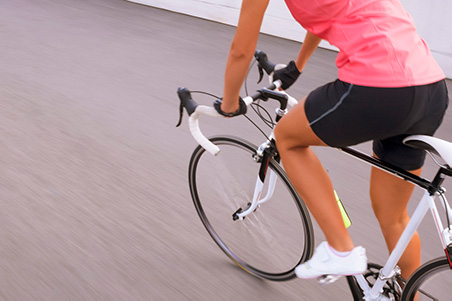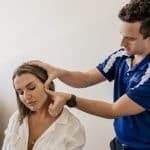Prevent knee pain when cycling.
According to a survey done by the Australian Physiotherapy Association, 518 recreational cyclists found 85% experienced one or more overuse injuries over a year, with 41% experiencing knee pain.
- These injuries can be caused by a variety of reasons:
- Excess training
- Racing
- Returning to exercise too quickly after a period of inactivity
Quite often, we see cases of knee pain from cycling after the third reason. After periods of inactivity, such as winter, after an illness or accident, or even the recent lockdowns, those who return to exercise rapidly are more prone to injury. This often presents as pain in the front of the knee.
This type of pain will not only affect further cycling, but can also impact your day to day life, which is why it’s important to try and prevent it as much as possible.
Three Ways To Minimise Knee Pain From Cycling.
To minimise this type of pain, the muscles in the legs, particularly the glutes and the quadriceps, and around the knees need to be strengthened. This can be done in two ways:
1. Gradually increase the amount of exercise
Slowly increasing the amount of cycling you do after you’ve been inactive for a long time will allow these muscles to build up again without being strained. We recommend increasing the distance, or load, by 10-20% each week. Try alternating your routes so that they vary in length – this can be a great way to explore other parts of your local area.
2. Ensure your bike is set up and fitted well
Another aspect of reducing pain is to optimise your body for cycling and ensure your bike is set up for your unique requirements. Having your bike fitted properly by a physiotherapist will prevent injuries, increase efficiency, comfort and improve performance for all cyclists. Of course this is for anyone who enjoys cycling, especially if you’ve already had an overuse injury. The right fit will maximise their enjoyment and performance.
Our bike fit process starts with the physiotherapist asking you questions about your cycling routine, where you experience any aches or pains, what other exercise you do and if you have any specific concerns with cycling. You will then have a thorough examination of your posture, mobility and strength to determine what areas of your bike need fixing. We will then get you on your bike and commence the bike fit process. This may involve adjustments to your seat, cleat and handlebar positions.
We recommend people see us for bike fitting appointments if they have recently purchased a new bike or are having issues with their bike. It is a good idea to have your bike re-fitted every 12-18 months regardless of issues to ensure it is still fitting you properly, as sometimes the bike components can shift over time without you realising.
3. Work on your strength and conditioning
It can be beneficial to incorporate some strength and conditioning training into your routine as you get back into cycling. General stretching, can be particularly beneficial, as well as the use of a spiky ball on the glutes and a foam roller on the quadriceps will help with soreness and recovery. When you book in for your bike fit appointment with our physiotherapists, they will be able to walk you through some of these exercises to do at home.
To ensure your bike is set up correctly and you’re not causing yourself any injuries through cycling, make sure you get in touch with our bike fitting specialist Joni. He’ll make sure you have the best start to cycling for an enjoyable, pain-free experience.



